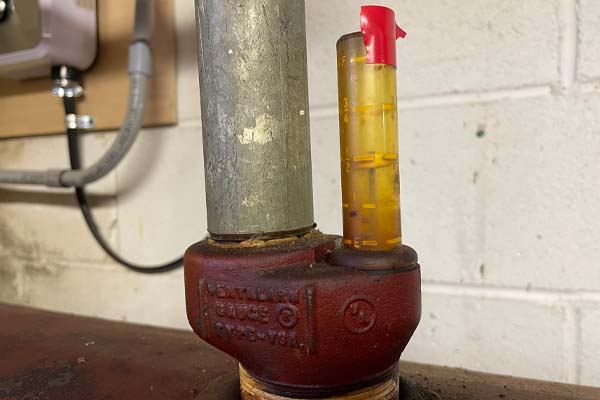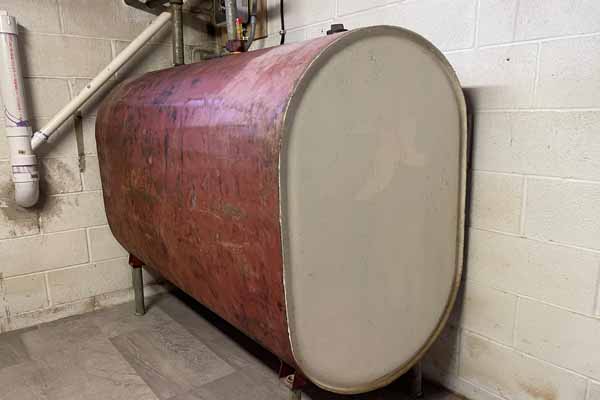How to Read Your Heating Oil Tank Gauge

A home with a heating oil system is equipped and ready for the winter season. Property owners do not have to rely on fuel from outside sources because they store oil in the heating oil tank. Therefore, they will not be vulnerable to any fuel supply disruptions, which homeowners that use natural gas may encounter. On the other hand, property owners must ensure that their tank size can meet their home heating needs. Also, it is vital to conduct regular checks on the fuel levels in the oil tanks by viewing the heating oil tank gauge. Doing so assists property owners to schedule timely heating oil deliveries, which is especially important during the winter season.
What You Should Know about Float Gauges in an Oil Tank
Contents
Even with modern technology, manufacturers have designed oil tanks almost the same way they were years ago because they are simple and efficient. The main body consists of a welded steel container with rounded edges. It also includes a vent pipe that releases excess air and a fill pipe to add oil. You will find a whistle or a vent alarm under the vent pipe. This alarm creates a sound when air escapes. Oil feed lines transport oil from the tank into the burner. You will also find a float gauge equipped with a hinged arm underneath. Its end floats on the surface of the oil, and the arm drops lower as the unit consumes heating oil. It also moves the oil tank gauge indicator disc simultaneously.
Related Article: What You Should Know About Condensation In Home Oil Tanks
Locating the Oil Tank on the Property

If you recently purchased your home, you must locate the oil tank on the property to check the oil tank gauge. You will find some tanks above the ground, which makes them easier to locate. On the other hand, the tank could be in a basement or underground. Regardless of the location, you should be able to find the flow gauge and external pipes. An oil tank is a large container that holds some 275 gallons or more of heating oil. An oil delivery company will never fill these tanks to the brim; instead, they fill them with about 225 to 250 gallons of heating oil. Air occupies the rest of the tank space and allows the heating oil to expand comfortably.
Assess the Oil Tank Float Gauge
Once you have found your home’s oil tank, pay attention to the heating oil tank gauge at the top. Look for a clear cylindrical apparatus that has an indicator disc. You will see these standard markings: E for Empty, ¼, ½, ¾, and F for Full. Look carefully at the disc to determine the level of the heating oil in your tank. If you are looking at this for the first time, you may be confused when you try to read it. Most people are unsure whether to follow the bottom or top of the disc. You do not need to stress over this because the gauge does not provide precise measurements. Focus on where the middle of the disc rests compared to the markings.
Related Article: How Much Heating Oil Will I Use A Day?
Calculate Fuel Capacity in the Heating Oil Tank

After noting the estimated fuel in the tank, your next step is calculating how many gallons remain. You can do this easily with a simple formula. First, confirm the size of the tank to determine the fuel capacity. For example, most homes carry a 275-gallon tank. We recognized that since you cannot fill the tanks to the brim, the tank may at most have 240 gallons of heating oil. Remember, air takes up the remaining space. Therefore, if the float gauge lands on ¼ capacity, you may only have 60 gallons remaining (0.25 multiplied by 240). While this fuel could last several weeks, you would need to consider ordering a refill rather than waiting for the tank to empty. You should always schedule heating oil deliveries when the tank is about 30% full.
Check For Heating Oil Tank Gauge Failure
The float gauge provides a basic estimate of the fuel level, and in some instances, it does not give a decent estimation if the float mechanism fails. You can check by removing the outer case and pushing the float down. The float should rise after you release it. If the float stays down, it is broken, and you will need to contact an expert technician to assess and repair it. Floats malfunction in older tanks because of long-term wear and tear. Sometimes, the arm below rotates and sticks on the side of the tank. Also, sludge may cover the float and weigh it down so it cannot function properly.
Related Article: Tips For Choosing A Fuel Oil Company
Get Past a Broken Oil Tank Gauge
If the gauge on the oil tank is broken, you have other options for determining your fuel level. You can also consider other options if your tank never had a float gauge. You can manually measure the fuel in the tank by placing a long stick that can fit in the hole, noting that the entire length should cover the tank’s height. After refilling the tank, dip the stick to determine the height of the fuel in the tank. Use a marker to mark the measurement. You can then use the stick in the future to evaluate how low the fuel capacity has gone.
Duration of Your Heating Oil Tank
Your heating oil tank will last for a reasonable amount of time, but its duration depends on the following factors:
- Size of your home
- How often you use your heating system
- Your heating system’s efficiency
- Regional climate
- How well your home is insulated
- Size of your heating oil tank
- Other factors
Many property owners rely on heating oil to warm specific spaces, while others use it for the entire house. Homeowners monitor how they use fuel annually to determine their heating oil needs.
Conclusion
Winters in New England are harsh. Never let your oil tank run low on heating oil in those blistering and windy months. Consistently monitor the float gauge to determine the fuel in your tank so you can order a refill before your capacity falls below the one-third mark. This practice ensures you can enjoy a safe, comfortable, and warm home during the winter.
For Superior Heating Oil Deliveries, Call Townsend Energy

Townsend Energy is proud to be a trusted, affordable heating oil supplier in the area. We offer different delivery plans and financing options. This way, you can customize your oil deliveries by choosing which option works best for you. By working with us, you can expect affordable oil prices and fast and reliable fuel deliveries. Click the link to view our service area.
Also, when you need maintenance service or repair for your heating system, our professionally certified technicians can help you. Our home heating services aim to improve efficiency and comfort, while reducing your energy costs. Call Townsend Energy today to schedule your appointment.
Contact us now at (800) 722-4101 to find out more!
